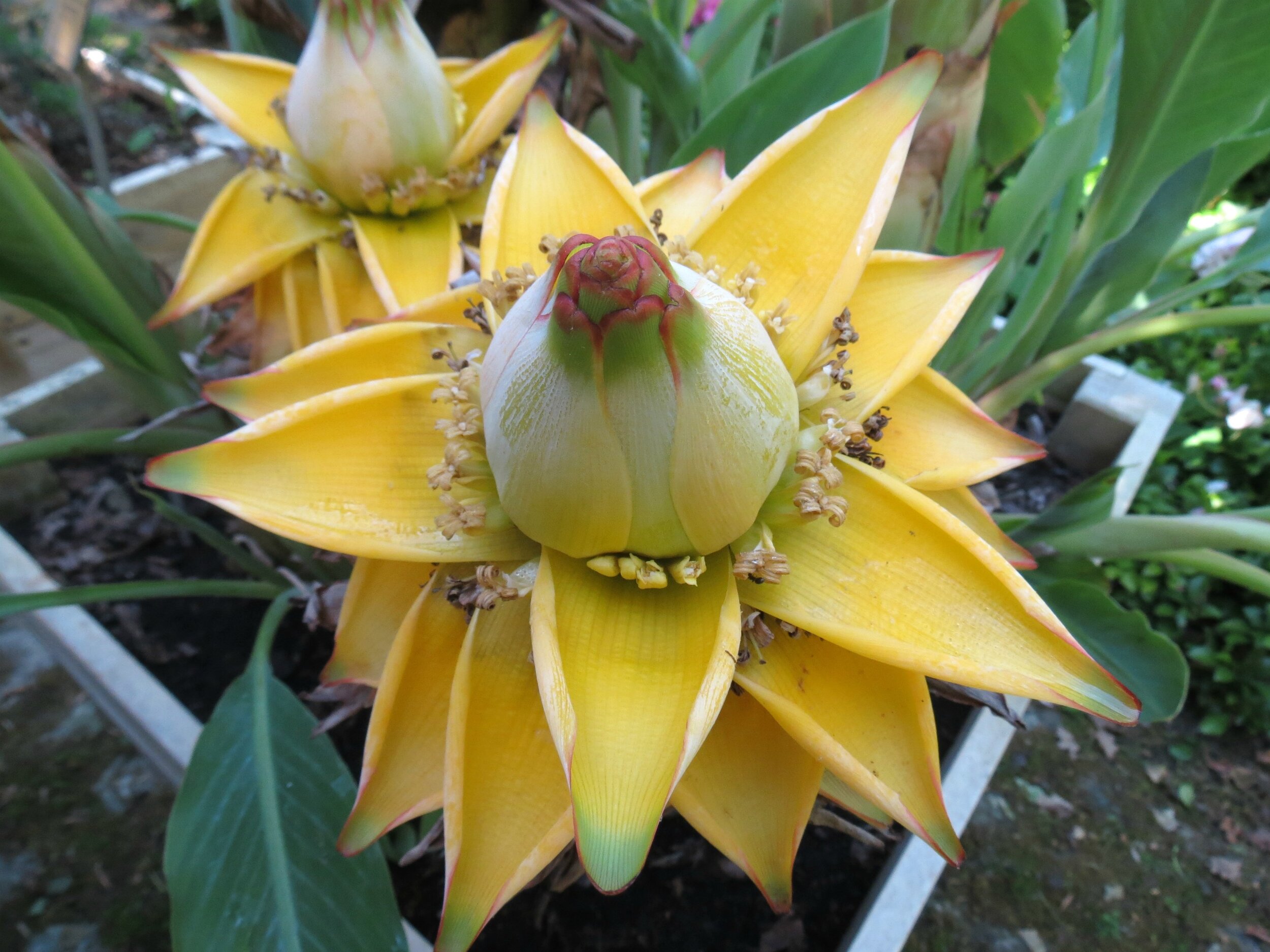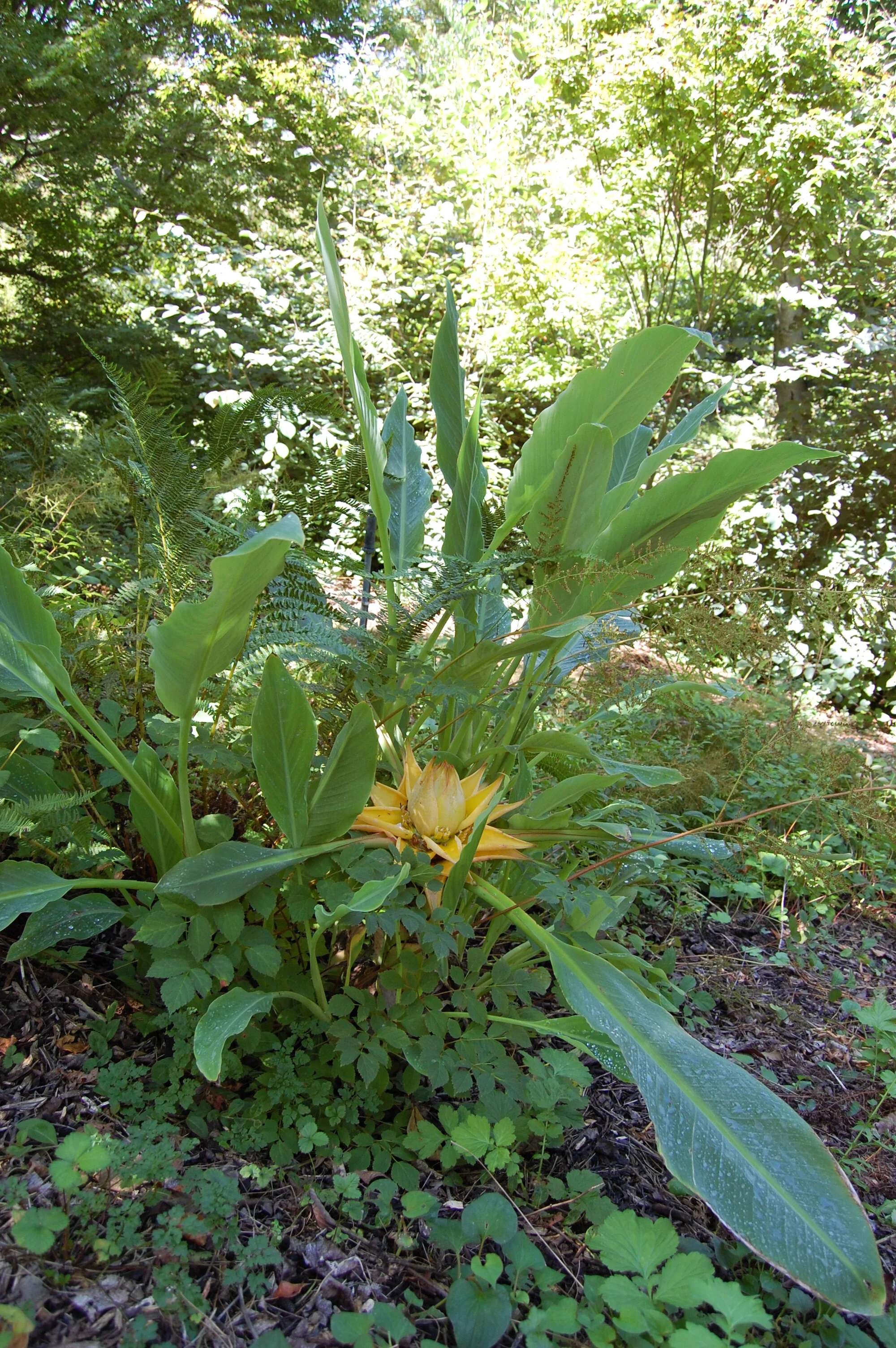Photo by Linda De Volder licensed under CC BY-NC-ND 2.0
While perusing the internet the other day, I scrolled past an image of what looked like the physical manifestation of the sun emoji on my phone. The bright yellow flash was so striking that it caused me to pause and scroll back to the source. I was pleasantly surprised to see that the sun-like object belonged to something botanical. I was even more surprised to find out that it was produced by a unique cousin of the banana called the golden lotus banana (Musella lasiocarpa).
The golden lotus banana is an oddball in many ways. For starters, it has a confusing taxonomic history. For many years, this odd plant has bounced back and forth between what was originally the only two genera in the banana family (Musaceae). Indeed, it has many outward characteristics that could firmly land it in either the genus Musa or the genus Ensete. Still, this plant is strange enough that numerous taxonomists have taken their own stab at narrowing down its correct placement. It wasn’t until DNA analyses revealed it to be so distinct from either of these genera that it warranted its own unique taxonomic placement. Thus, the monotypic genus Musella was born.
Photo by FarOutFlora licensed under CC BY-NC-ND 2.0
The plant itself is well known and widely cultivated throughout its home range in the Yunnan province of China. In fact, the golden lotus banana is so widely cultivated in this region as food for both humans and cattle alike, that experts couldn’t quite figure out if there were any wild populations left. It wasn’t until relatively recently that some wild populations were found. Sadly, these populations are under threat of being completely extirpated as much of the conifer-oak forests it calls home have been highly fragmented and degraded due to human activities. At least its popularity in cultivation means this species is not likely to go completely extinct any time soon.
The golden lotus banana is rather interesting in form. When you look for pictures of this species around the web, you are likely to pull up images of a stubby, nearly leafless stalk tipped with the bright yellow bracts that look like the rays of a cartoonish sun. Apparently, plants can lose many of their leaves in cultivation around the time the inflorescence matures, giving the impression that it never had any to begin with. Of course, the plant does produce typical banana-like leaves for most of the year. As mentioned, the amazing inflorescence is borne at the tip of what looks like a small, woody trunk, but in reality is actually the fused petioles of their leaves. All members of the banana family are, after all, overgrown herbs, not trees.
As is typical with this family, the flowers don’t all ripen at once. Instead, they begin at the base and gradually ripen over time, revealing consecutive whirls of tubular flowers surrounded by bright yellow bracts, though a variant population that produces red bracts was recently described as well. Interestingly, the golden lotus banana differs from its banana cousins in that its flowers are not pollinated by bats or birds. Instead, bees and wasps comprise the bulk of floral visitors, at least among cultivated populations. The first flowers to mature are male flowers that produce a small amount of nectar and copious amounts of pollen. Only the flowers near the base of the inflorescence are female and they produce a lot more nectar than the male flowers.
Photo by Linda De Volder licensed under CC BY-NC-ND 2.0
Research has shown that bees are far more likely to visit female over male flowers and their visits to female flowers last much longer. This is likely due to the differences in nectar production, but the end result is that by encouraging bees to spend less time on male flowers and more time on female flowers, each plant greatly increases the chances that pollen of unrelated individuals will end up on the stigma. After pollination, tiny fruits are formed, however, from what I have read they are largely inedible to humans. Once the fruits ripen and seeds are dispersed, the flowering stalk dies back and is replace by a fresh new growth stalk from the underground rhizome.
The next time you find yourself at a botanical garden with a decent tropical plant collection, keep an eye out for the golden lotus banana. Outside of China, this species has gained some popularity among specialist plant growers and you just might be lucky to stumble across one in the process of blooming.


